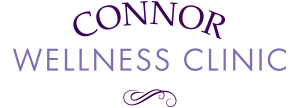How to test your blood sugar and track it:
- Test your blood sugar first thing in the morning after fasting for at least 12 hours. Drink water just after rising, but don’t eat anything or exercise before the test. This is your fasting blood sugar level.
- Test your blood sugar again just before you eat.
- Eat your typical meal. Do not eat anything with calories for the next three hours.
- Test your blood sugar one hour after lunch. Set an alarm.
- Test your blood sugar two hours after lunch. Set an alarm.
- Test your blood sugar three hours after lunch. Set an alarm.
Record the results, along with what you ate for the meal. Do this for two days. This will tell you how the foods you normally eat affect your blood sugar levels.
On the third day, you’re going to do it a little differently. On step 3, instead of eating your typical meal, you’re going to eat 60 – 70 grams of fast-acting carbohydrate. Such as a large (8 oz) boiled potato or a cup of cooked white rice. For the purposes of this test only, avoid eating any fat with your carbs because it will slow down the absorption of glucose.
Then follow steps 3-5 as described above, and record your results.
| Marker | Ideal* |
| Fasting blood glucose (mg/dL) | <86 |
| OGGT / post-meal (mg/dL after 1 hour) | <140 |
| OGGT / post-meal (mg/dL after 2 hours) | <120 |
| OGGT / post-meal (mg/dL after 3 hours) | Back to baseline |
| Hemoglobin A1c (%) | <5.3, under 5.0 is optimal |
The goal is to make sure your blood sugar doesn’t consistently rise higher than 140 mg/dL an hour after a meal, but does consistently drop below 120 mg/dL two hours after a meal, and returns to baseline (i.e. what it was before you ate) by three hours after a meal.
Second, if you normally eat low-carb (less than 75g/d), your post-meal readings on the third day following the simple carbohydrate (rice or potato) challenge will be abnormally high.




